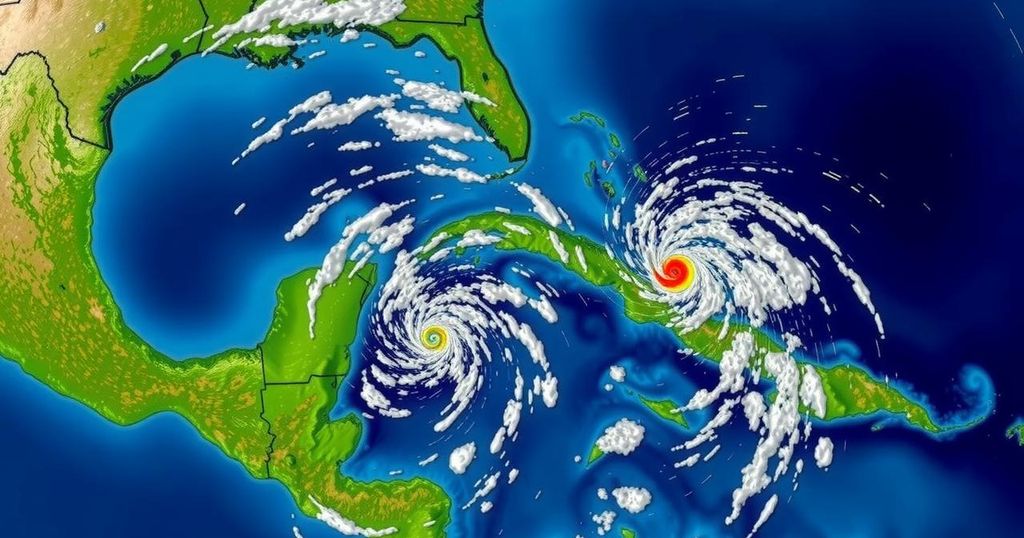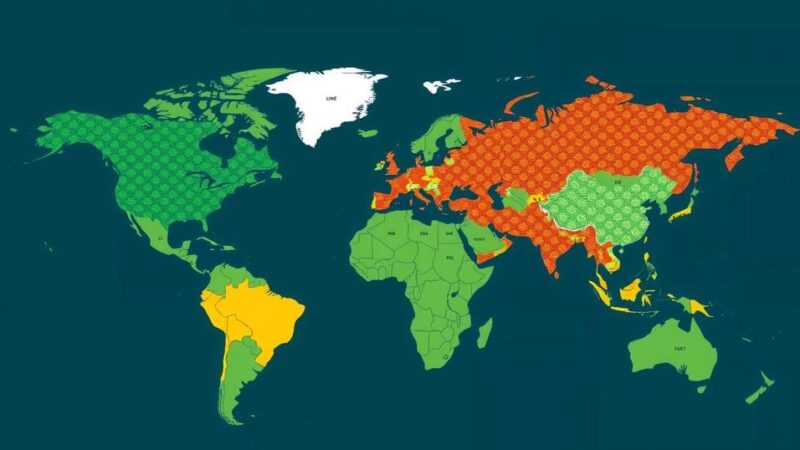The National Hurricane Center is tracking two weather disturbances, including Subtropical Storm Patty, located west of the Azores with 65 mph winds. While a tropical depression could form in the southwestern Caribbean impacting regional areas, Texas is expected to remain unaffected this weekend. The historic occurrence of hurricanes in November is minimal, and residents are advised to stay informed about potential developments.
The National Hurricane Center (NHC) is currently monitoring two disturbances, notably the formation of Subtropical Storm Patty. The storm has maximum sustained winds of 65 mph and is located approximately 300 miles west-northwest of the Azores, moving east-southeast at 13 mph. As it continues on its path, tropical storm conditions are anticipated in parts of the Azores, which may experience rainfall of 1 to 2 inches through Sunday, in addition to dangerous surf and rip current conditions due to generated swells. In the Southwestern Caribbean, there is a looming potential for a tropical depression to develop as forecasts suggest an 80% chance of low-pressure formation over the coming week. This system could significantly influence weather conditions across the western Caribbean, potentially affecting regions such as Jamaica, Hispaniola, and Cuba. However, the advisory currently indicates that Texas is not expected to be impacted by these systems this weekend. The month of November typically sees a shift in tropical development towards the United States, with historically rare hurricane occurrences in this period. Given this, weather experts note that while chances of storms forming exist, actual landfall impacts remain uncertain. “Most reliable guidance suggests that the western flank of that steering high pressure will still extend over the Gulf, keeping a potential storm moving west or northwestward into the southwestern Gulf of Mexico,” highlighted Ryan Truchalat, notable forecaster and owner of Weathertiger. This indicates that while vigilance is warranted, immediate threats to Texas are minimal.
The Atlantic hurricane season spans from June 1 to November 30, typically witnessing peak activity during the months of August through October. Late season storms are less predictable, as warmer waters and shifting atmospheric conditions can cause tropical systems to develop closer to the U.S. coast rather than originating far out over the Atlantic. In comparison to early season occurrences, November has historically produced fewer landfalling storms due to changing weather patterns. The importance of monitoring disturbances arises from their potential to evolve into significant weather threats, especially as conditions in the Caribbean can foster tropical development at this time of year. Accordingly, the NHC closely tracks emerging weather phenomena for public awareness and safety.
In conclusion, while the NHC is closely monitoring Subtropical Storm Patty and other disturbances in the Caribbean, Texas is not currently facing imminent threats from these systems. The potential development of a tropical depression in the Caribbean may warrant further attention in the coming days. It remains prudent for residents in affected areas to stay informed about evolving weather conditions, particularly as the hurricane season reaches its end, leaving open the potential for unexpected developments.
Original Source: www.statesman.com






